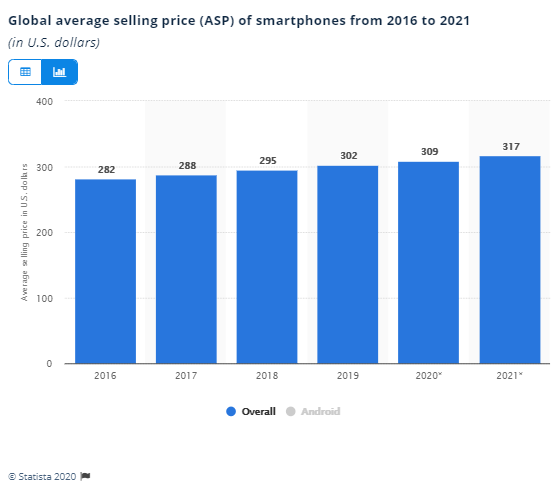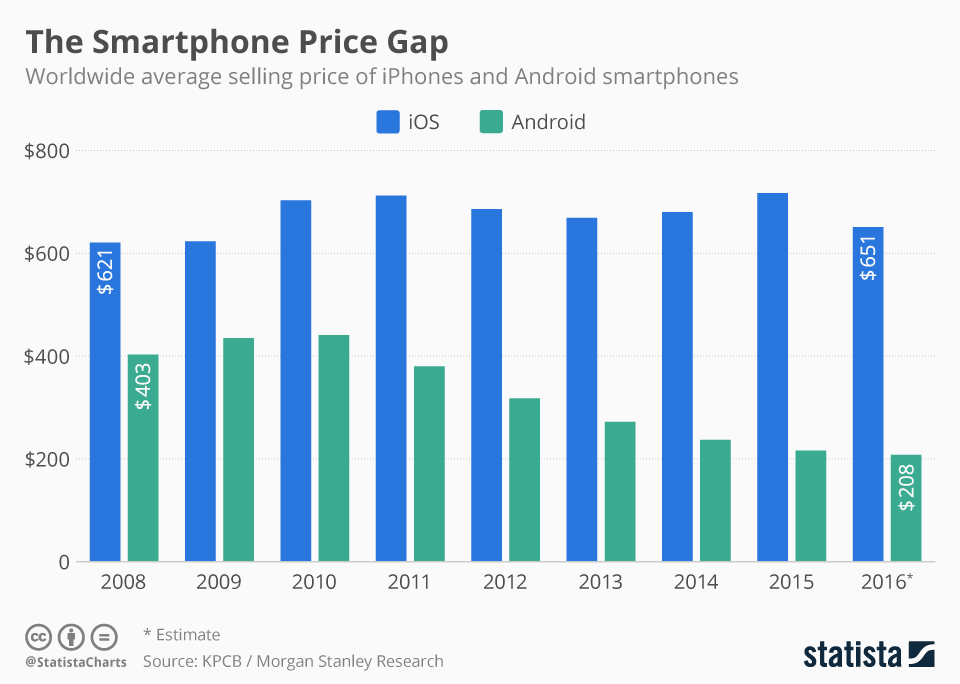7 Case 02: Mobile
Mobile Phones Prices
Which feature implies a higher price of the mobile phone?
Mobile phones are no more merely a part of our lives. Whether it’s to stay connected with friends and family or to keep abreast of important developments around the world, mobiles are no longer for sending a text or making a call. From budget to state-of-the-art smartphones; indigenous names to global big-wigs - a whole universe of mobiles is available. The price of the devices devices depends on features like: screen to body ratio, AI-powered cameras, storage capacity, blazing quick processing engines, reflective glass designs, etc.

Nowadays, most people who want a Smartphone, already have one. According with Statista (2019), ``the average selling price (ASP) of smartphones is expected to reach 317 U.S. dollars in 2021, 35 U.S. dollars more expensive than the ASP in 2016. In 2019, the ASP of an android device was 33 U.S. dollars lower than the overall average’’.

It is generally accepted that Apple’s iPhones are the most expensive smartphones. As stated in Statista (2016), “the price gap between iPhones and Android phones has widened considerably over the years”. The chart on the right illustrates, the difference in average selling prices grew from $218 in 2008 to $443 in 2016.

By means of an updated list of retail final prices we are going to find out which are the features that can imply a high price, besides being an iPhone.
In order to illustrate how to use a dataset to perform some statistical analysis, we made up a case with real data of smartphones prices.
This is an illustrative case! Although data and references are real, the conclusions are limited to a class example.